Everything You Should Know Before Buying a Guitar Amp

This article covers essential information about guitar amps, how to build them, and amp alternatives for traveling guitarists.
The guitar amplifier may be the single most influential invention of the 20th century in terms of music.
The sound of Jimi Hendrix wailing on his Fender Stratocaster is iconic. The crushing overdrive through Marshall’s 100-watt Super Lead valve amp heads inspires generations of people to pick up the guitar.
Imagine modern music without the guitar amp.
Machine Gun Kelly wouldn’t have blended the guitar with hip-hop. Tash Sultana wouldn’t have created deeply moving songs with her effects pedal.
The guitar amp allows the player to create their own tone, to make things explosive and electric.
So what kind of guitar amp should you buy to find your tone? Let’s dig deeper into their mechanics and bring to light what each amp is best for.
- What is a guitar amp?
- What to consider before buying a guitar amp.
- How to use a guitar amp.
- What’s the average price of a guitar amp?
- Seven Great Guitar Amps to Buy in 2022.
- Orange Micro Dark 20-watt Amp Head
- Boss Katana Head MkII 100-watt Guitar Amp Head
- EVH 5150 Iconic Series 80-watt Head
- Orange Crush 35RT 1×10″ 35-watt Combo Amp
- Fender Blues Junior III 1×12″ 15-watt Tube Combo Amp
- Vox AC15C1 1×12″ 15-watt Tube Combo Amp
- Mesa Boogie Rosette One: Ten – 300-watt 2-channel Acoustic Amp
- Things to remember.
- FAQs.
What is a guitar amp?
A guitar amp is an electrical system that interacts with what is known as a pickup on a guitar. Pickups often consist of copper wound coils in a casing under the guitar’s strings.
The guitar pickups can be either active or passive. Active pickups are powered by an onboard battery creating a stronger signal. Metal musicians often use them.
Passive pickups are not powered on board and are far more common in guitars. They send a weaker signal to the amp.
An electric amp works as an acoustic amp does. It ‘picks up’ the signal coming to it from the wound coils under the guitar strings.
There are a few different types of guitar amps. Here, we focus on the most common styles.
Download the Simply Guitar app if you want to sound amazing on a guitar amp. Plenty of tutorials and other great features help you on your journey as a guitarist.
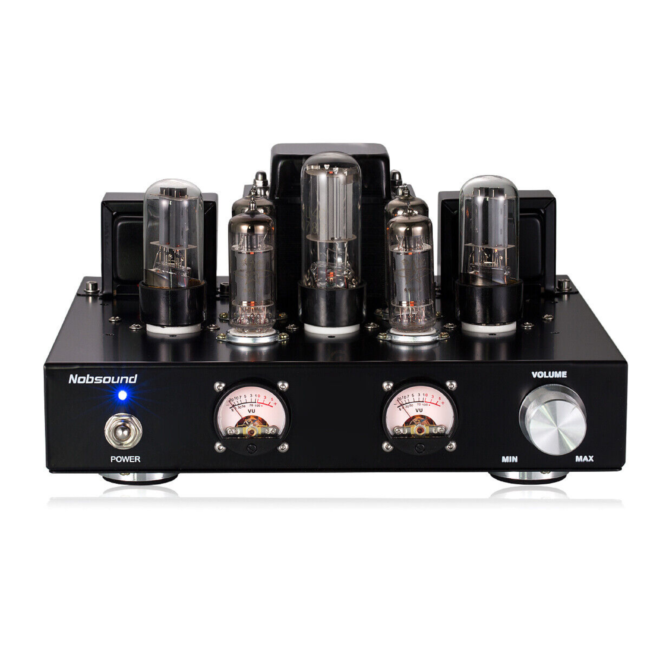
Vacuum tube guitar amp
The vacuum tube, or valve amp, is an amplifier that uses vacuum tubes to increase the guitar pickup signal’s power.
Increasing the amplitude through vacuum tubes gives off a particular sound. Listen to any Rock and Roll, Blues, or Jazz song from the 1940s to the 1970s. You can hear the warm, beautiful sound of vacuum tube amplification.
If you buy a tube amp, remember to warm the tubes before playing. It would help if you turned the amp on and off correctly. Otherwise, you may damage the tubes.
Vacuum tubes require replacement after 500 to 1000 hours, depending on the manufacturer and how you treat them. So be ready to incur some costs maintaining your amp.
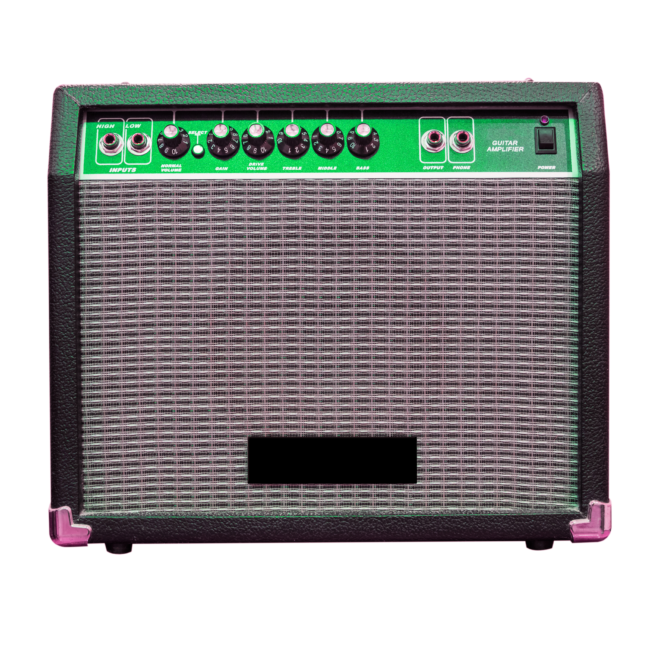
Solid-state guitar amp
The solid-state amp has a different sound than a tube amp. A solid-state amp’s tone is colder than its predecessor, the vacuum tube amp.
The cold tone is a result of its engineering. A solid-state amp relies on circuits and transistors to amplify the signal coming from the pickups.
The tone doesn’t have the warmth of a tube amp but is perfect for genres such as Hard Rock and Metal. Additionally, they require far less maintenance.
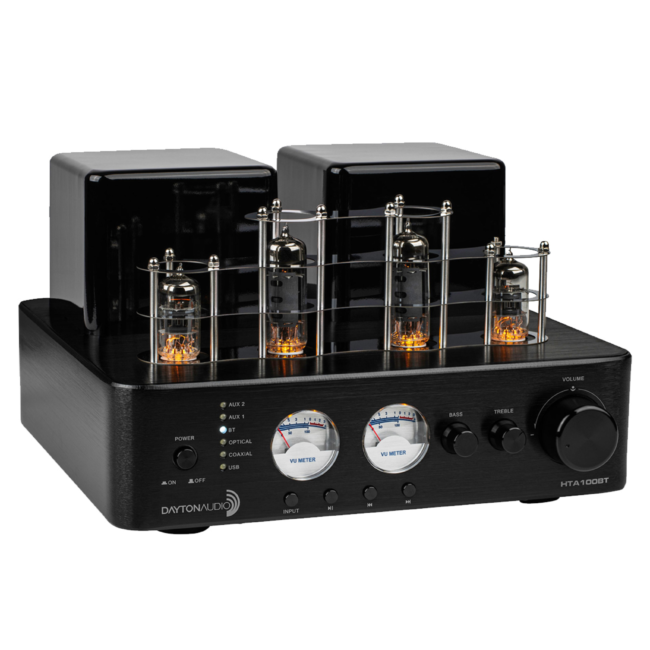
Hybrid vacuum tube/solid state
If you are looking for dynamic tones, a hybrid amp marries the best of both worlds—the cold, the almost robotic sound of the solid state, and the warm-blooded sound of the vacuum tube.
This type of guitar amp is not as common. It costs more, but it’s an investment that pays off in the long run for a serious guitar player.
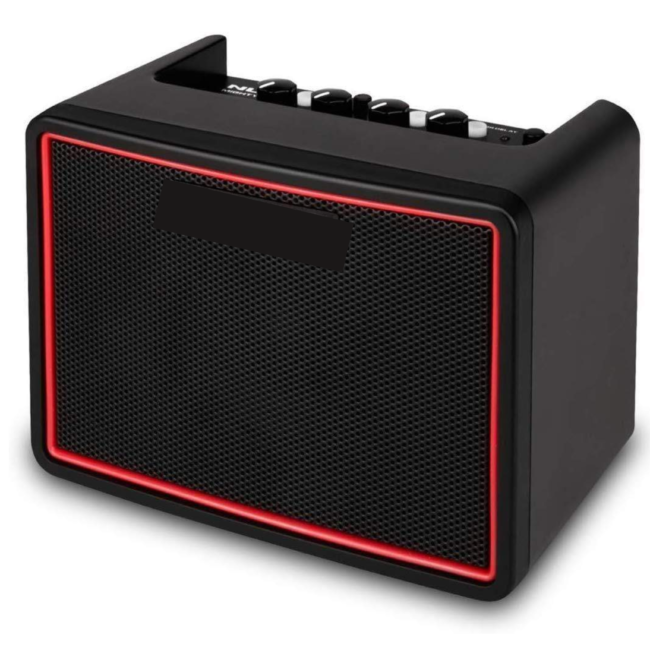
Combo guitar amp
These amps consist of an amp head built into a speaker cabinet, making for easy transport and travel.
What to consider before buying a guitar amp.
Buying an amp is a big decision. The amp you choose undoubtedly defines your sound as a guitar player. Consider the style of music you like playing. There is an amp for every style.
A vintage Crate SG100 solid-state amp isn’t the best choice if Americana is your jam. Instead, a Marshall SV20H Studio Vintage better suits this style of music.
Portability may be a factor in your decision. Are you buying the amp for playing in your home studio? If you are gigging, you want a portable guitar amp. It needs to be easy to set up on stage.
Another factor is your budget. If you don’t have a lot of cash on hand, don’t blow it on an expensive amp. You don’t necessarily need it and can save money for guitar strings.
Plenty of killer amps are under $100. Get something within your means, save money from your gigs, and buy the Mesa Boogie of your dreams.
How to use a guitar amp.
Not all amps are plug-and-play. Take into account what type of amp you have.
A vacuum tube must warm up before playing. There are usually two switches on the front. One warms up the tubes, and once the tubes are ready, the other sends the signal to the speaker cabinet.
On the other hand, a solid-state amp is ready to rock & roll the second you turn on the power and plug in your guitar.
The placement of the main power switch varies depending on the make and model. Once you locate the power switch, turn the main volume down to zero and flip the switch into the on position.
If the volume isn’t at zero, you may damage the speaker cones in the cabinet.
Get your guitar and plug the ¼ inch cable into the guitar and amplifier. Depending on the model, there may be multiple ¼ sockets, so make sure to plug the guitar into the right one.
Now you are ready to start finding your tone on your guitar amplifier. Turn the volume up while giving a light strum on your guitar until you reach the desired level.
Now play around with the tonal knobs to find the guitar tone you want. Most amps have a bass, mid and treble setup. However, some have a full onboard equalizer.
You can adjust the gain structure if your amp has a gain knob. For instance, turn the gain knob higher than the volume if you want distortion. The higher the gain with low volume, the crunchier the distortion.
What’s the average price of a guitar amp?
The price varies greatly depending on the make, model, and type you buy. A vintage Mesa Boogie Maverick costs much more than an Orange combo.
You should set aside at least $500 to get an amp with a good tone known to stand the test of time. However, there are plenty of amps for any budget, such as a Pig Nose.
Let’s dive deeper into some great guitar amps you should consider buying.
Seven Great Guitar Amps to Buy in 2022.
Not all amps are created equal, so here is a list of some great amps in various price ranges in 2022.
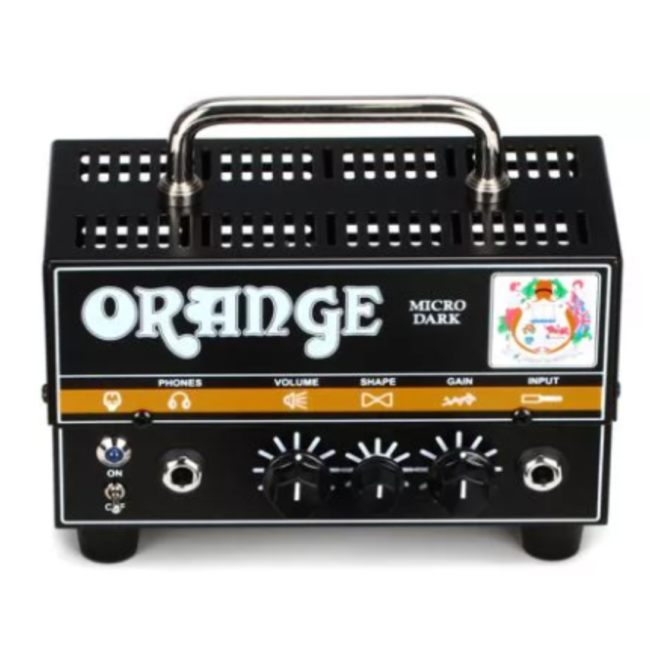
Orange Micro Dark 20-watt Amp Head
Orange amps have a great tone, and Mico Dark is an excellent example of how they sound. This straightforward hybrid guitar amp offers impressive sound in a tiny package.
The amp is extremely portable, making it great for the gigging musician. And for a 20-watt guitar amp, it sure packs a punch in the volume department.
If you are looking for ease of use, there are only three knobs on the Micro Dark—the volume, shape, and gain, respectively.
At just $200 brand new, this amp gives a lot of bang for the buck and is great for beginners.
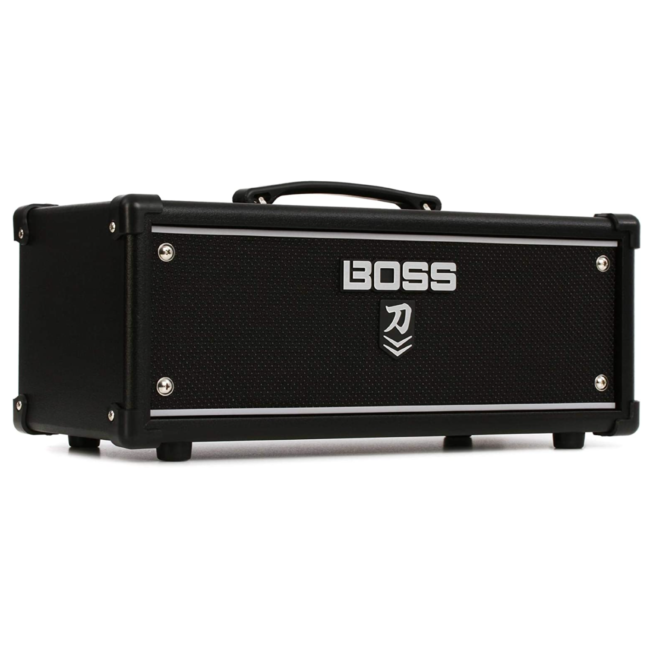
Boss Katana Head MkII 100-watt Guitar Amp Head
Boss is a world-famous company for guitar effects pedals, and the Katana MkII guitar amp is a marriage between effects and power.
You can learn more in the post, What are Guitar Pedals For and How to Use Them.
This bad boy has 100 watts pumping out incredible effects such as reverb, delay, and more. The amp is suitable for acoustic and electric players of all skill levels.
With 60 onboard Boss effects, five distinct amp settings, and a litany of tonal knobs, the Katana MkII is a tone junkie’s paradise.
This is a good step up for beginners and won’t break the bank at $400.
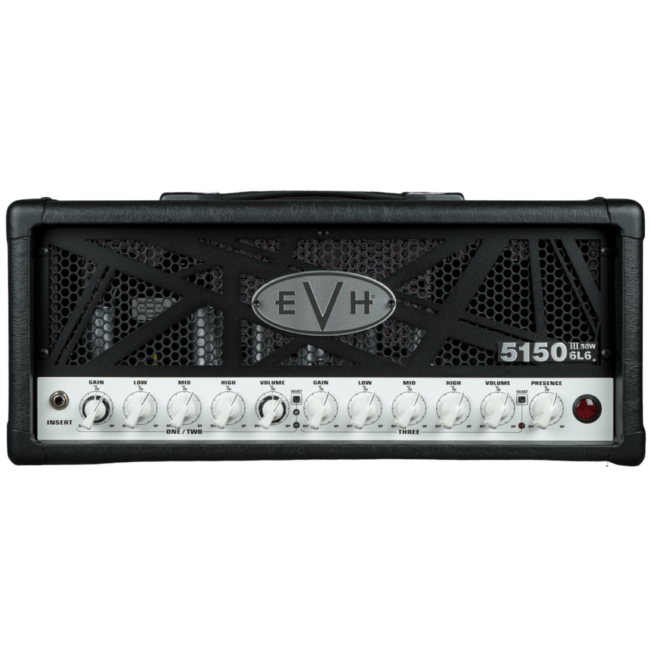
EVH 5150 Iconic Series 80-watt Head
A new spin on the classic metalhead favorite, the EVH 5150 is a lot of amp for the price. Featuring a streamlined design for easy traveling and the classic tones of Eddie Van Halen, Metal players love the 5150.
It takes its name from the police code for the clinically insane. You can see what they mean when you turn it on, plug in and start playing.
The distortion is legendary. Though $1000 may seem a hefty sum, it’s worth every penny.
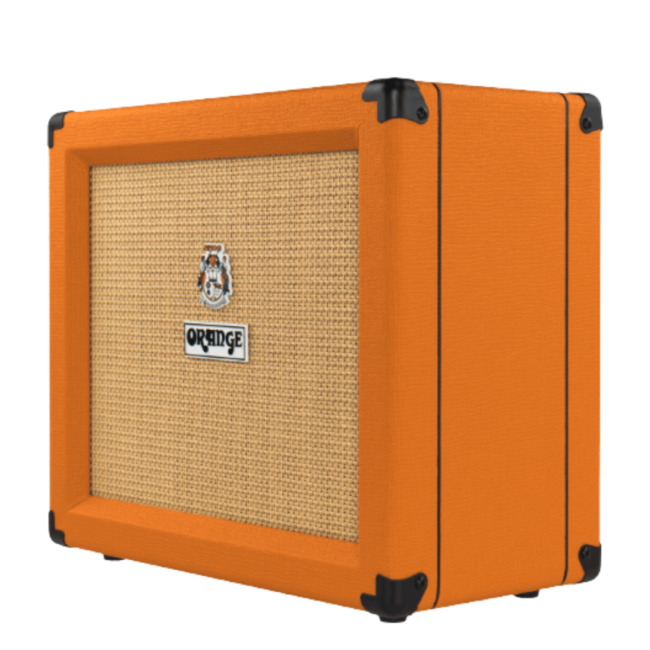
Orange Crush 35RT 1×10″ 35-watt Combo Amp
Another amp by Orange making the list is the Crush. This combo amp is a favorite among coffee gig musicians and has an excellent sound for a single 10″ speaker running on 35 watts.
There is a good reason Orange is such a popular choice among guitarists of all skill levels—their tone is classic.
This amp is an excellent choice for beginners, and with a price tag of only $300, it’s a great investment starting out.
Fender Blues Junior III 1×12″ 15-watt Tube Combo Amp
Fender is one of the most recognized guitars and amp companies, and the Blues Junior showcases why.
The tone on this guitar amp is crystal clear, and for a 15-watt combo amp, it has a louder voice than you’d think.
Coupled with its rockabilly styling, you not only sound great, you’re also gigging in style.
This classic Blues amp comes in at $800, so it is an investment but a worthy one.
Vox AC15C1 1×12″ 15-watt Tube Combo Amp
Another famous company, Vox, has a distinct sound. The AC15C1 is a perfect example.
With a 12″ speaker and 15 watts to back it up, this guitar amp has a deeper tone than amps like the Orange Crush.
If you like the sound of musicians such as John Lennon, Vox is the right guitar amp. But you must be willing to fork out the $800.
Mesa Boogie Rosette One: Ten – 300-watt 2-channel Acoustic Amp
Mesa Boogie is likely the best guitar amp company in the world. There is just something about their sound. It’s transcendent.
Mesa Boogies are some of the more expensive amps on the market, but they are worth the extra coin.
If you want an amplifier with an incredible tone that will likely outlive you, the Mesa Boogie Rosette One is right up your alley.
This amp is perfect for acoustic duos and solo singer-songwriters, with three hundred watts of pure bliss with two fully separated channels.
The price tag of $1500 might seem steep for an acoustic amp, but it is well worth the price.
Things to remember.
Now you know more about how to use a guitar amp, the types of amps, and the different companies making them. So get out there and play some at your local guitar shop.
There is an amp for every guitar player, and finding which company is the right fit for you is all part of the fun.
Download the Simply Guitar app to speed up the learning process and see fast results! The app has many features to help you learn to play the guitar.









